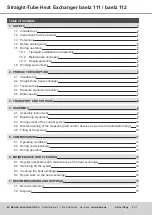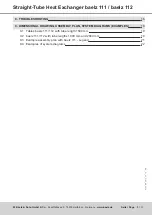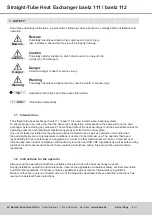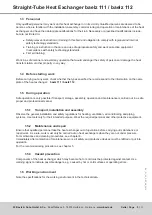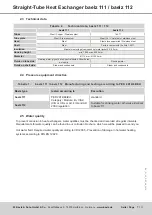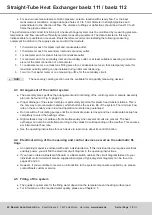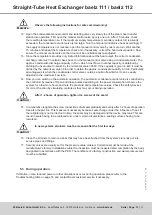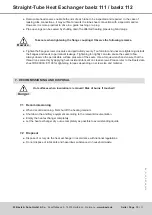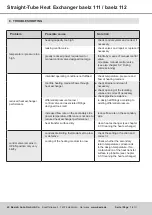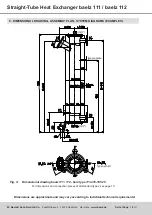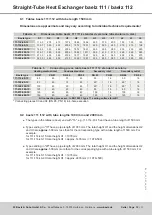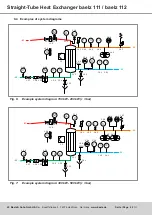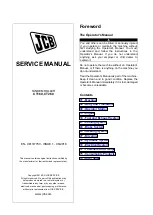
14 |
23
W. Baelz & Sohn GmbH & Co.
· Koepffstrasse 5 · 74076 Heilbronn · Germany ·
www.baelz.de Seite | Page
Straight-Tube Heat Exchanger baelz 111 / baelz 112
Procure replacement seals before starting repair work. Refer to the construction drawing or
order directly from Baelz stating the order and / or device number.
Baelz recommends concluding a maintenance contract with our technical customer service.
This ensures regular maintenance of your heat transfer system, extends its service life and
ensures reliable and safe operation.
6. MAINTENANCE AND CLEANING
Risk of scalding! Before cleaning and maintenance work, check whether the
device is depressurized and whether the fluid temperatures have dropped so
low that scalding is ruled out.
●
Only use Baelz original spare parts!
6.1 Regular inspections and maintenance of the heat exchanger
If you have not signed a maintenance contract with Baelz technical service, you must otherwise ensure that
regular inspections and maintenance are carried out in accordance with the relevant national regulations.
6.2 Switching off the system
If the system is switched off, only the condensate control valve receives a Close impulse and remains closed.
The secondary pump continues to run briefly to reduce or prevent heat accumulation in the heat exchanger.
However, the steam valve remains open and thus the steam pressure is on the heat exchanger as well as on
the condensate rail. This prevents oxygen from entering the heat exchanger/condensate rail when the system is
switched off (risk of corrosion). The system self-checks with the condensate level probe at the steam inlet (01).
6.3 Cleaning the heat exchanger
●
See chapter 2.5 for water quality requirements. If the water quality requirements are not met, it may
be necessary to clean the heat exchanger. Contamination restricts the performance of the system and
endangers the material. Hard incrustations in particular hinder the expansion of the heating system and
can thus cause material damage.
● Have dirt removed at an early stage by a qualified specialist company. Limescale can be removed with
acid. Do not use cleaning agents that attack the material. Make sure that no residues of the cleaning
agent remain in the heat exchanger.
●
Only easily soluble hardeners (e.g. carbonate hardness) can be removed with acid mixtures. Poorly
soluble hardeners (e.g. gypsum) require a correspondingly greater effort. Only a chemical examination
of the contamination by a specialist company provides information about the potential success of a
cleaning.
●
If sludge deposits are present in addition to limescale, the solvents must be mixed with special additives.
Normal acid mixtures are generally not suitable for the removal of sludge deposits. In this case, consult a
specialist company.
6.4 Repair work on the heat exchanger
Danger
Tip:
Tip:


